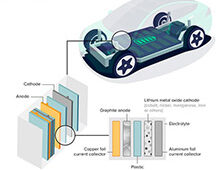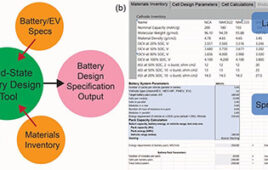The tiny phytoplankton Emiliania huxleyi,
invisible to the naked eye, plays an outsized role in drawing carbon from the
atmosphere and sequestering it deep in the seas. But this role may change as
ocean water becomes warmer and more acidic, according to a San Francisco State
University research team.
In a study published in Global Change Biology, SF State Assistant Professor of Biology
Jonathon Stillman and colleagues show how climate-driven changes in nitrogen
sources and carbon dioxide levels in seawater could work together to make Emiliania
huxleyi a less effective agent of carbon storage in the deep ocean, the
world’s largest carbon sink.
Changes to this massive carbon sink could have a
critical effect on the planet’s future climate, Stillman says, especially as
atmospheric carbon dioxide levels continue to rise sharply as a result of
fossil fuel burning and other human activities.
While floating free in the sunny top layers of the
oceans, the phytoplankton develop elaborate plates of calcified armor called
coccoliths. The coccoliths form a hard and heavy shell that eventually sinks to
the ocean depths. “About 80% of inorganic carbon trapped down there is from
coccoliths like these,” says Stillman.
Stillman and his colleagues wanted to discover how
ocean acidification and changes in the ocean’s nitrogen cycle—both hallmarks of
climate warming—might effect coccolith development. So they raised more than
200 generations of Emiliania huxleyi in the laboratory, adjusting carbon
dioxide levels and the type of nitrogen in the phytoplankton’s seawater bath.
They found that high levels of carbon
dioxide—which make the water more acidic—along with a shift in the prevailing
nitrogen type from nitrates to ammonium—”had a synergistic effect” on
the phytoplankton’s biology and growth.
In particular, coccoliths formed under conditions
of high carbon dioxide and high ammonium levels were incomplete or hollow, and
contained less than the usual amount of inorganic carbon, the researchers note.
“The ratio of inorganic to organic carbon is
important,” Stillman explains. “As inorganic carbon increases, it
adds more ballast to the hard shell, which makes it sink and makes it more
likely to be transported to the deep ocean. Without this, the carbon is more
likely to be recycled into the Earth’s atmosphere.”
“Our results suggest in the future there will
be overall lower amounts of calcification and overall lower amount of transport
of carbon to the deep ocean,” he adds.
Emiliania huxleyi typically use nitrates to make proteins, but this form of
nitrogen may be in shorter supply for the phytoplankton as the world’s oceans
grow warmer and more acidic, Stillman and colleagues suggest. In the open
ocean, nitrates are upwelled from deep waters, but a thickening layer of warmer
surface water could inhibit this upwelling. At the same time, the warmer
temperatures favor bacteria that turn recycled nitrogen from surface waters and
the atmosphere into ammonium, and acidification inhibits the bacteria that turn
ammonium into nitrate.
“It is likely that in the future, the ocean
surface will contain more ammonium,” which the phytoplankton will
assimilate instead of nitrates, Stillman suggests. “Metabolizing nitrogen
as ammonium versus nitrates requires different biochemical constituents that
impact how well the cells make their coccoliths. They will survive just fine,
but their biology will be different as a result.”
The study by Stillman and colleagues is the first
to look at the intertwined effects of ocean acidification and changes in
nitrogen on phytoplankton like Emiliania huxleyi. It’s also one of the
first studies to observe these effects continuously over a long time scale,
“so the responses of the phytoplankton are likely what we’ll see in the
ocean itself,” Stillman says.
Stephane Lefebrve, the SF State postdoctoral student who developed the
experiments for the study, says he is now looking for phytoplankton genes that
“will help us to build the genetic blueprint of their responses to
elevated carbon dioxide and a nitrogen source”
SOURCE




